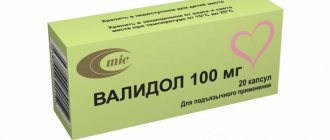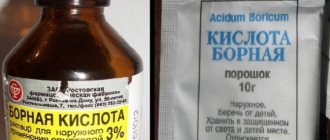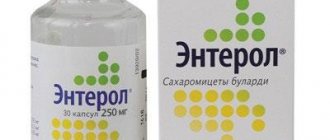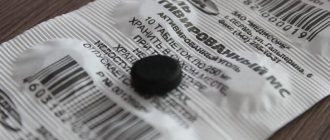Not only adults, but also small children can suffer from constipation. This disease greatly affects the baby’s health, as it causes severe abdominal pain, a feeling of heaviness and the inability to empty the intestines. In such cases, many mothers immediately give cleansing enemas, without even realizing that this procedure could harm the health of the baby. From our article you will learn when it is advisable to use an enema and how to do it correctly, the acceptable frequency of the procedure and existing alternative solutions.
When does a child need an enema?
Poor nutrition leads to constipation.
Using a diagnostic enema, a special contrast agent is introduced into the intestine, which is necessary for an X-ray examination of the intestine.
A diagnostic enema is performed only after a cleansing enema. A cleansing enema is indicated for emptying the intestines of feces and is recommended for constipation, poisoning, and preparation for other types of enemas.
In this case, you should adhere to the appropriate temperature of the water in the enema - +30 - + 38 degrees.
If it is necessary to reduce body temperature during hyperthermia, you can also give a cleansing enema. The water should have a temperature of no more than +18 - + 20 degrees. The problem of bowel movement in infants is most often associated with enzyme deficiency or an incompletely formed digestive system. Older children often suffer from constipation due to:
- Poor nutrition;
- Congenital pathology (for example, dolichosigma - elongation of the sigmoid colon, Hirschsprung's disease - a genetic abnormality of the development of the large intestine);
- Chronic bowel disease;
- Violation of the normal balance of microflora in the intestine.
A laxative enema is also indicated for constipation, to facilitate the passage of feces in spastic colitis. When performing this type of enema, glycerin or vegetable oil is injected into the rectum, the effect of which occurs after a few hours. For this reason, such an enema is done mainly in the evening, so that the result is in the morning.
An oil enema can be a type of laxative or therapeutic enema, which is done when there is inflammation in the intestines. It is made with vegetable oils heated to 37 degrees - hemp, sea buckthorn, rosehip oil. They envelop hardened feces and improve their evacuation from the intestines.
Read: Fiber: how to take it, what beneficial properties it has
A hypertensive enema is usually performed in a hospital inpatient setting for intestinal paresis, atonic colitis, or as a type of laxative. To carry it out, you will need to make a special saline solution: dissolve 10 g of ordinary table salt in 100 ml of boiled water. The effect occurs approximately 30 minutes after the procedure.
How to properly give an enema to a child, watch the video:
A medicinal enema is prescribed if it is necessary to introduce medications into the intestines: antibiotics, anticonvulsants (2% chloral hydrate solution), sea buckthorn oil, chamomile decoction, etc.
Used to treat inflammatory diseases in the rectum and sigmoid colon. For better absorption of drugs, the injected solution should have a temperature of 40 degrees. Mandatory preliminary cleansing enema.
Nutritional enemas are indicated for persistent vomiting. They are carried out by introducing glucose-salt solutions into the intestines by drip in a hospital. Siphon enemas help cope with various poisonings and intoxications of the body. They are carried out in stationary conditions using large amounts of water to thoroughly rinse the intestines.
Alternative solutions to enema
If a child complains of pain during bowel movements, and his tummy is swollen and the baby constantly cries, you can use several methods to make it easier to pass hardened feces.
Baby or plain soap
A small piece of the substance is soaked under warm water until it becomes slippery. The soap is then carefully inserted into the baby's anal passage. The substance will help soften stool and make stool easier to pass. Soap can be used to make rectal suppositories.
Thermometer
The narrowed part of the thermometer must be inserted into the child's anus and scrolled in different directions, thereby provoking irritation of the rectum. After some time, the child should have a bowel movement.
Cotton swab
The principle of using this method is similar to using a thermometer. Only before this the cotton wool is treated with baby cream, soap or petroleum jelly.
Microlax
Microlax must be injected into the body up to the mark indicated on the spout, squeeze out the contents of the container and pull it back. Lightened bowel movements should occur within two hours.
What do you need to perform an enema?
Esmarch's mug will help give your baby an enema.
To give an enema, your child will need:
- oilcloth;
- diaper;
- a set of syringes;
- Esmarch's irrigator;
- pot;
- solution for administration;
- thermometer for water.
An enema syringe looks like a pear-shaped rubber can with a rubber or plastic tip. For different ages, syringes of different volumes are used - from 30 to 360 ml.
Esmarch's mug looks like a rubber balloon, with a long rubber tube attached to it, at the end of which there is a removable tip.
Starting from 4-5 years of age, it can be used to cleanse the intestines of children. To perform therapeutic enemas, a special rubber tube is used, into which the medicine is injected with a syringe.
Causes and symptoms of constipation
Some cats (especially certain breeds) are prone to digestive problems, and, accordingly, to difficulties with bowel movements. Veterinarians call normal bowel movements up to two times a day. The diagnosis of chronic constipation is made if visiting the toilet occurs once every 2-3 days. In this case, laxatives are prescribed, a diet high in fiber is recommended, and a forced bowel movement is performed. To prevent intoxication and dehydration, infusion therapeutic treatment (droppers and injections) is carried out.
The causes of intestinal congestion in cats are various diseases of internal organs (not only the digestive tract, but also the kidneys and liver), endocrine and even psychological disorders. Before treating constipation, you need to find out what caused it, otherwise the therapy will be ineffective and even harmful.
An attentive owner will easily identify the symptoms of a lazy bowel:
- Restless behavior while going to the toilet. The cat begins to make uncharacteristic sounds or meow loudly.
- Frequent, but ineffective sitting in the tray.
- Hard excrement with bloody or mucous discharge.
- Noticeable decrease in appetite.
- The apathetic mood of an animal that stops playing, licking itself, and tries to hide.
- Restless attitude towards caresses, touches in the abdominal area.
Constipation causes stool to accumulate and harden in the colon, making it difficult to empty it naturally. Prolonged absence of bowel movements can cause poisoning of the body due to rotting of food debris inside the intestine.
Technique and features of giving an enema to a child
An enema is done using a syringe.
The rules for administering an enema to a child state that for children under 3 years of age, and even more so for infants, such a procedure can only be done as prescribed by a doctor.
This is explained by the fact that in early childhood, stool retention is not in all cases associated with digestive disorders. The child may have serious surgical pathologies in which an enema is strictly contraindicated.
Read: Antimicrobial antibiotic Levofloxacin: instructions for use
A cleansing enema is given to a baby using a syringe, preferably with a soft rubber tip. Before starting the procedure, the mother should wash her hands well with soap and boil the pear for 30 minutes. After this, the syringe must be squeezed so that the air comes out, lower its end into the solution prepared for the enema and, slowly unclenching it, collect the required amount.
Also, before carrying out, you should lubricate the tip of the syringe with vegetable oil or Vaseline.
For atonic colitis, the water in the syringe should have a temperature of about 20 degrees, and for spastic colitis - about 38. To enhance the effect, you can add 2 teaspoons of purified glycerin or vegetable oil to the water. To administer an enema, the child should be placed on an oilcloth covered with a diaper and his legs should be raised up.
If the child is older than one year, he must be placed on his left side and his legs tucked towards his stomach. Then you need to release the air from the syringe by lightly pressing the balloon. Having carefully spread the child’s buttocks, you need to insert the tip of the syringe through the anus into the rectum 2 cm. Squeezing the syringe slowly and evenly, inject the solution into the rectum.
It is better to do this only while inhaling. If the child cries, the procedure should be temporarily suspended. Upon completion of the injection of the required volume of liquid, you should carefully remove its tip without unclenching the syringe. The child’s buttocks should be kept squeezed for 1-2 minutes so that the liquid is retained a little.
Then, for about 10 minutes, the child’s position should be changed so that the liquid is evenly distributed throughout the intestines. After this, the child empties into a diaper or potty.
At the end of the procedure, the child needs to be washed. The syringe should also be rinsed well, dried and placed in a closed container for storage. Next time, before using it, you also need to boil it for half an hour.
It is important to know
This procedure may not be beneficial in all situations. It all depends on the child’s health condition and possible pathologies. In order not to harm the baby, you should definitely consult a doctor. Especially when it comes to how to give an enema to a child under one year old. The newborn’s body is not yet strong and not fully formed. If during this period parents constantly stimulate the intestines, this organ may weaken. Subsequently, the child simply will not be able to defecate on his own. Therefore, before the procedure, you need to weigh its necessity several times.
The procedure for administering an enema to a child older than one year is similar.
For children 4-5 years old, an enema is performed using an Esmarch mug.
For children over 4-5 years old, an Esmarch mug is used when administering an enema. Its tip should also be boiled for 30 minutes before the procedure. and lubricate with vegetable oil or Vaseline.
Read: Bifiform: instructions for use will tell you about the features of the drug
Boiled and cooled water to about 30 degrees is poured into Esmarch's mug. A small amount is released to bleed air from the tube.
With the child lying on his left side with his legs tucked to his stomach, the tip is carefully inserted into the rectum 2 cm towards the navel.
Then, slightly changing the direction (towards the tailbone), another 3-5 is introduced. After this, the tap on the tube is opened, and the liquid enters the intestines. The tap on the tube allows you to adjust the speed of water introduction.
If immediately after the start of the procedure the child experiences discomfort, then close the tap, wait a few minutes, and resume administration, but do it more slowly. After introducing the required amount of water, the tip is removed. The child should still lie down, periodically changing his position.
The effectiveness of the enema depends on the time after administration of the solution before the act of defecation; the longer it is, the better the cleansing effect. If the enema does not give the desired effect, do not panic or despair. If within 5-6 hours after the procedure the child still does not go to the toilet, then it can be repeated.
How to recognize constipation in a newborn?
The baby’s body is far from perfect: during the first year of life, the child’s gastrointestinal tract continues to form, and the intestinal microflora is established. Therefore, problems with bowel movements in children may occur more often than parents would like. As a rule, factors such as:
- poor nutrition of a mother who is breastfeeding;
- feeding the baby with a formula that is not suitable for him;
- intestinal pathologies that affect the process of passing feces.
Home methods for treating constipation can be dangerous for a newborn, so it is important to first consult a pediatrician about possible and optimal methods of treating this phenomenon.
As for baby stool, normally a newborn can defecate up to 10 times a day or there may be no stool for about 3-4 days, provided that the baby’s general condition does not change - he also remains active, he is not capricious, and does not press his legs to his tummy due to spasms, the process of defecation takes place without pain, and the stool itself has a normal consistency and color.
Constipation in a baby can manifest itself with the following symptoms:
- formed or hard feces, even if the baby defecates daily - normally, a newborn should recover from mushy feces;
- the child makes significant efforts to defecate;
- bloating and excessive gas;
- moodiness, tearfulness along with disruption of the feeding process;
- spasmodic phenomena and vomiting in case of intestinal pathology;
- sleep disturbance.
It is worth paying attention to the fact that constipation can only be a symptom of a more serious pathology. Therefore, if your baby is bothered by this problem in the first month of life, immediately consult a pediatrician for advice - only a specialist can determine the real cause of constipation and decide whether the newborn needs an enema.
How does the volume of enema solution depend on the age of the child?
The volume of solution for infants is 30-60 ml.
The age of the child and the type of enema affect the required amount of solution administered. So, if the enema is a cleansing one, then you can enter:
- newborn – 25 ml;
- infant up to 6 months – 30-60 ml;
- child from 6 to 12 months. – up to 150 ml;
- for a baby aged 1-2 years – up to 200 ml;
- from two to 5 years – up to 300 ml;
- child aged 5-10 years – up to 400 ml;
- from 10 years – 500 ml.
When performing a laxative enema, you can use 5-10 ml of purified glycerin or 30-150 ml of vegetable oil, the dose of which will be indicated by the doctor. For inflammatory processes in the intestines, 10-30 ml of oil is used for therapeutic oil enemas. Its dose and type should also be discussed with your doctor. A hypertensive enema involves the administration of about 30 ml of saline solution.
In what cases should an enema be used?
Basically, you may be faced with the need to give your baby an enema during the period when adapted milk formulas begin to be added to his diet. It takes some time to observe the body's reaction to such a product. Often the baby’s body reacts to such mixtures with constipation until it passes during the adaptation period.
You can use an enema if one-time constipation occurs, for example, the child does not have a bowel movement for more than a day. In this case, parents are obliged to help the baby cleanse the intestines using an enema. In cases where constipation in children recurs regularly, regardless of the child’s age, this requires consultation with a doctor. Moreover, using an enema in this case is always prohibited.
You can resort to using an enema and carry out the event at home to achieve the following goals:
- administer a medicinal product;
- cleanse the intestinal cavity during constipation;
- alleviate the child’s condition in case of poisoning.
If the drug is introduced into the baby’s body using an enema, this significantly speeds up the effect of the medications. When an enema is performed for constipation, it enhances intestinal motility and quickly removes feces. This occurs due to mechanical irritation of the intestinal mucosa by the incoming liquid.
If a child often experiences constipation, then the permissible number of enemas, which will not cause any harm to the baby’s health, is 1 time every four days. Exceeding the permissible number of activities with a cleansing enema may lead to the child being unable to empty himself in the future.
What are the contraindications?
If you have chronic constipation, you should consult a doctor.
If there is a suspicion of acute surgical pathology in a child (acute appendicitis, intestinal bleeding, intestinal obstruction), an enema is prohibited.
You should not do a cleansing enema immediately after surgical interventions in the abdominal area.
You should also know that in case of chronic constipation, you must definitely consult a doctor and look for other methods of getting rid of the problem. You shouldn't get carried away with enemas.
Read along with this article:
- Benefits for the body: how often can you give an enema?
- Enema for babies: indications, choice of pear and features...
- How to give an enema to an infant - the necessity of the procedure...
- Colon cleansing with an enema: an affordable and effective way...
- How to do an enema yourself? Is this possible?
- How to do an enema at home? How does an enema work on...
- Enema during pregnancy, emergency cleansing
- Will an enema help children with constipation?
- How to properly prepare for a colonoscopy at home?
Lack of bowel movements: when should you sound the alarm?
When a baby reaches the age of three, new foods containing fiber are already present in his diet. Also, the child is constantly moving, so he should already have bowel movements 4-6 times a week. If a child walks less than the established norm and complains of pain in the tummy, the mother is obliged to show him to the doctor. If, during diagnosis, the specialist did not find any pathologies that cause constipation, the baby can be given an enema.
A three-year-old child should go to the toilet up to 6 times a week
Important! An enema only makes defecation easier, but does not solve the problem of constipation.
How to give an enema to a cat: algorithm of actions
Before carrying out the cleansing, it is useful for the owner to know what is needed for an enema and in what order it occurs. It would be safer to ask a family member to help, because pets are very resistant to such procedures and show strong resistance when trying to escape. Holding the cat at this time is the main task of the assistant.
What you need to prepare
Before giving a cat an enema at home, you need to prepare all the equipment and materials so that they are at hand. They can be purchased at a regular pharmacy or veterinary clinic; some of them can be easily found at home. For the cleaning procedure you will need:
- A syringe in the shape of a rubber bulb. Choose an option with a rubberized tip that will not injure the anus. The size of the syringe depends entirely on the age of the animal and varies from 150 ml for a kitten to 300 ml for an adult.
- Bowl for diluting the solution. Ordinary water with the addition of a few drops of apple cider vinegar (can be replaced with lemon juice) and petroleum jelly is suitable as an infused liquid. Some doctors recommend adding a teaspoon of sea salt (for kittens - half a teaspoon). The liquid temperature should be 25-30 degrees.
- Additional equipment: Vaseline or baby cream for application to the tip of the syringe, disposable gloves, a water thermometer, a comfortable and spacious basin for bowel movements.
In addition to all of the above, the owner will need patience, absolute calm and a clear understanding of the algorithm of actions. If you start to get nervous, your pet will sense it and become worried too.
Technique
Before carrying out the procedure, assess the situation: even the most peace-loving phlegmatic cat will not react well to this method of treatment. It is necessary to secure the pet well so that it cannot harm itself or a person. Towels, soft fabric or straps will do; if there is a special collar, use that too.
The manipulation is carried out on an empty stomach. The syringe is filled with a medicinal solution and squeezed, expelling excess air. After this, the tip of the pear is dipped in Vaseline or baby cream.
Then the tip is inserted into the anus in a helical manner, directed longitudinally to the spine. Actions should be slow and very careful, without pushing. Maximum penetration is 2 cm for an adult, 1 cm for a kitten. Deeper penetration with a syringe can seriously injure the patient. To avoid mistakes, you can make a mark on the pear with a pen or pencil.
Having inserted the tip into the anus, you should gradually press on the rubber bulb so that the solution begins to flow into the colon. If you feel difficulty with the passage of water, you should immediately stop the manipulation. Further injection of excess fluid will cause injury or rupture of the rectum.
The next important stage will be the forced retention of the injected fluid in the cat’s body. You need to close the anus with your tail and press it tightly. Both the owner and the cat will have to be patient - it will take at least 10-15 minutes. Only then will the stagnant masses begin to soften, and then natural bowel movement will occur. Then you will need a comfortable wide basin, in which the animal is placed instead of a tray.
How to give an enema to a kitten? There are no fundamental differences in the procedure for adults and children. You just need to reduce the portion of liquid according to the age and weight of the kitten.
If you are carrying out the procedure for the first time and do not know how to give an enema to a cat with constipation at home, it is better to seek help from a person who already has similar experience. Perhaps you have friends or relatives who once enema their animal.
Solution for administration
For each individual use, a new special composition should be prepared. It is done immediately before the cleansing process. There are several types of simple and accessible solutions:
- Warm remedy with added salt, which is made from 20 grams of magnesia and 30 grams of table salt. The mixture of substances is diluted with 100 ml of water and then dissolved over low heat. The liquid is introduced slightly warm.
- Saline solution, which is made from 30 grams of ordinary salt and 1 liter of water. To enhance the effect, you can add another 10 grams of salt, but only with the permission of the veterinarian. The liquid should be introduced gradually, in portions of 50 ml.
- Soapy liquid, which is made from 1 liter of water and 1 tablespoon of baby soap, grated. Only baby and light laundry soaps do not have dangerous additives, dyes and have a neutral pH level, so they can be used for cats without harm to their health.
- Chamomile decoction. The bags or flowers are brewed with boiling water and infused for 30 minutes. Afterwards, the solution is filtered through cheesecloth so that the crumbs do not penetrate into the liquid. For 1 liter of water, take 1 tablespoon of chamomile powder - or one sachet. The decoction is administered warm, almost at room temperature.
- Glycerin composition. Add 1 tablespoon of glycerin to 1 liter of water, mix and pour into a syringe.
The veterinarian advises which option to choose. Each composition has contraindications that affect the condition of the pet. Before use, the liquid is heated or cooled to a comfortable temperature.
Preventing constipation
To reduce the number of digestive tract problems in cats, you should pay attention to simple preventive measures. For example, timely grooming will eliminate the formation of hairballs inside the stomach. They can obstruct the passage of feces by accumulating in the gastrointestinal tract. To avoid such trouble, use pastes and phytomines. Well, cats who spend time outdoors cope with this problem themselves: they eat grass, which causes vomiting and eruption of hairballs.
Physical activity plays an important role in preventing chronic constipation. The yard individual runs around the street day and night, but the furry homebody, who does not have access to the street, spends most of his time on the sofa or bed. He moves little, usually eats a lot and is often obese. The owner must keep the cat in good physical shape with the help of animal toys, special exercise equipment and entertainment houses.
It is worth including fiber in your diet: it helps cleanse the body of stagnation and accumulation of feces. If an animal consumes dry industrial food, it must be of the highest quality. Premium canned goods solve the problem of peristalsis well, but do not always guarantee good digestion.
The cat's natural food should be enriched with vitamin and mineral complexes. Low-fat milk products: kefir or cottage cheese should appear regularly in the diet. Pumpkin puree soups with the addition of a small amount of vegetable oil are very useful for pets suffering from sluggish peristalsis. It is important to provide the cat with access to clean drinking water - it has an effect on the dilution of feces and promotes their better excretion.
Enema of a cat at home is allowed only as prescribed by a doctor. He will help determine which solution is best for your pet, suggest an algorithm of actions, and prescribe the frequency and dosage. Forced bowel cleansing has contraindications and is therefore used only after determining the cause of constipation. Prevention involves adjusting the diet, establishing the correct drinking regime and adequate physical activity.
The article is for informational purposes only. Contact your veterinarian!










